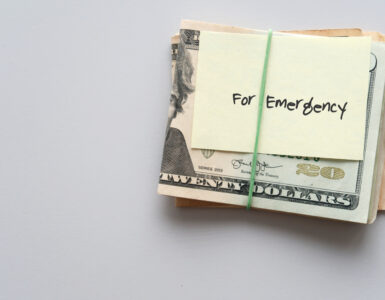We’ll reveal just that, along with where to get an emergency loan so you can get the quick cash you need.
Emergency Loans Defined
You probably figured out that an emergency loan is a type of last-minute funding that can be used to pay for emergency expenses. For instance, let’s say you lost your job and your savings have run dry. All of your bills have piled up, and you have creditors calling you around the clock.
How can you get out of that financial hole? With an emergency loan that can pay any past-due bills, rent or mortgage payments, and other necessities. Beyond those typical expenses, emergency loans are often used for necessary home repairs, auto repairs, medical bills, and funeral costs.
How Emergency Loans Work
There are many types of emergency loans. We’ll focus on perhaps the best option, which is the unsecured personal loan. Other types of emergency loans that could help you, however, include:
- Credit card advances.
- Title loans, where your car title serves as collateral.
- Secured personal loans, where your car, home, etc., is used as collateral.
- Payday loans, which offer quick cash under $500 but extremely high interest rates that could put you into a vicious cycle of debt.
As for how unsecured personal loans work for emergencies, the typical procedure is as follows:
First, you check your credit score to see where you stand since many personal loan lenders use that to make their lending decision. Second, you make moves to improve your score, if necessary, although this can be tough if you need the emergency loan immediately. Third, you determine how much of an emergency loan you need to cover your unexpected costs.
Fourth, you shop for emergency loans via your bank or credit union or online lenders such as LightStream, Upgrade, Avant, Rocket Loans, Prosper, or Upgrade by using their prequalification process. And lastly, you formally apply for the emergency loan from the lender that offers the best rates and terms.
Once you get the funding, which could be the same day in some cases, or a few days, depending on your bank, you will be expected to repay the loan. If you get a personal loan between $1,000 and $100,000, you could be looking at repayment terms between one to seven years to make your monthly payments as manageable as possible. Depending on the lender you pick, there could be an origination fee, plus late fees or prepayment penalties. To avoid such costs, shop around and do your due diligence.
Picking The Best Emergency Loan
Keep several things in mind to get the ideal emergency loan for your needs as you shop around.
Consider the lender’s speed, as they differ in how long it takes to make lending decisions and disburse funds. Pay close attention to the interest rate and any fees involved. Prequalification can help you find the best interest rate.
Look for terms that fit your budget, as you do not want a repayment schedule that will be tough to abide by. And don’t forget about the eligibility requirements, as your credit score, income, and other factors may not be sufficient for certain lenders.




